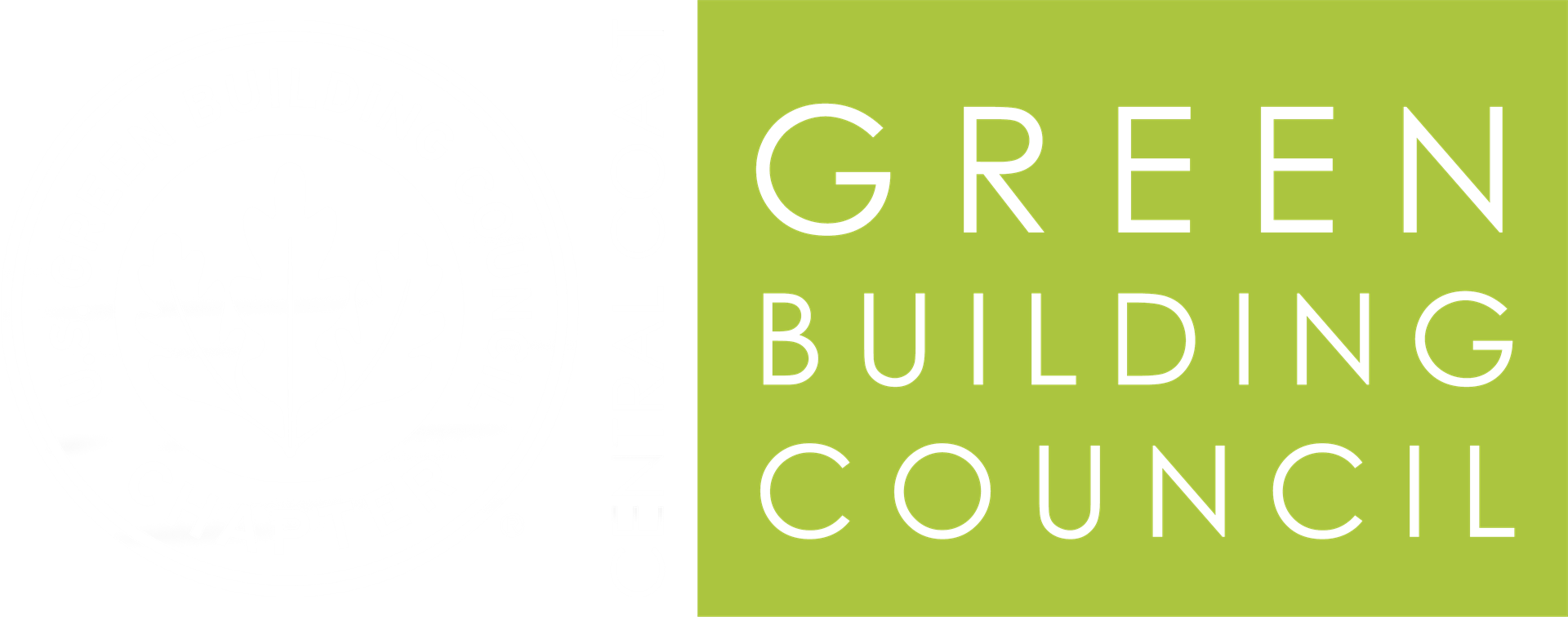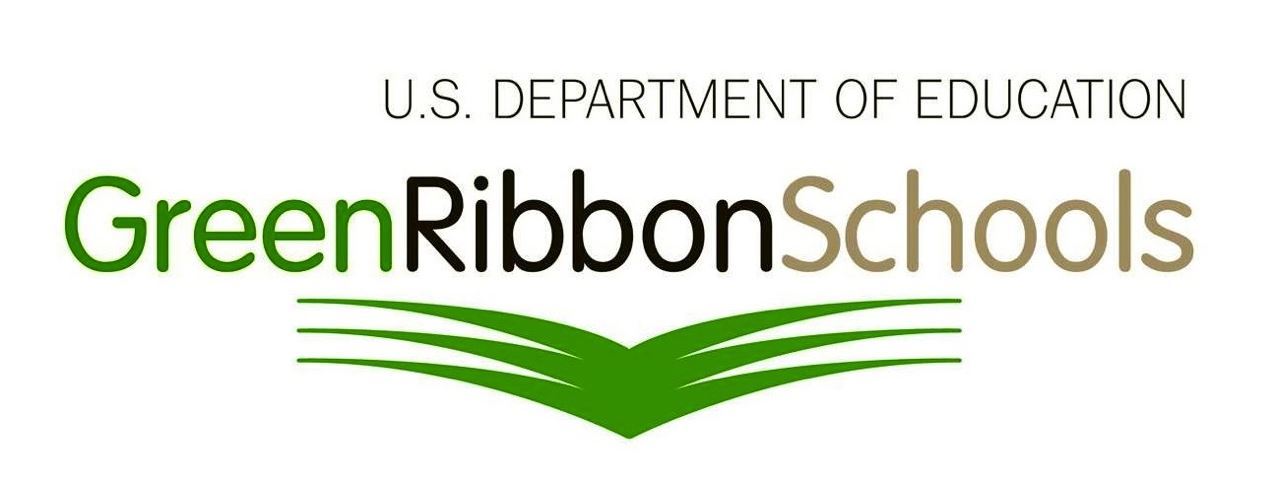
The U.S. Department of Education announced on May 16th that Monterey Road Elementary School in Atascadero is among the 2018 U.S. Department of Education Green Ribbon Schools award honorees!
Monterey Road Elementary School was nominated by the California Department of Education for their many accomplishments within the three pillars as seen here:
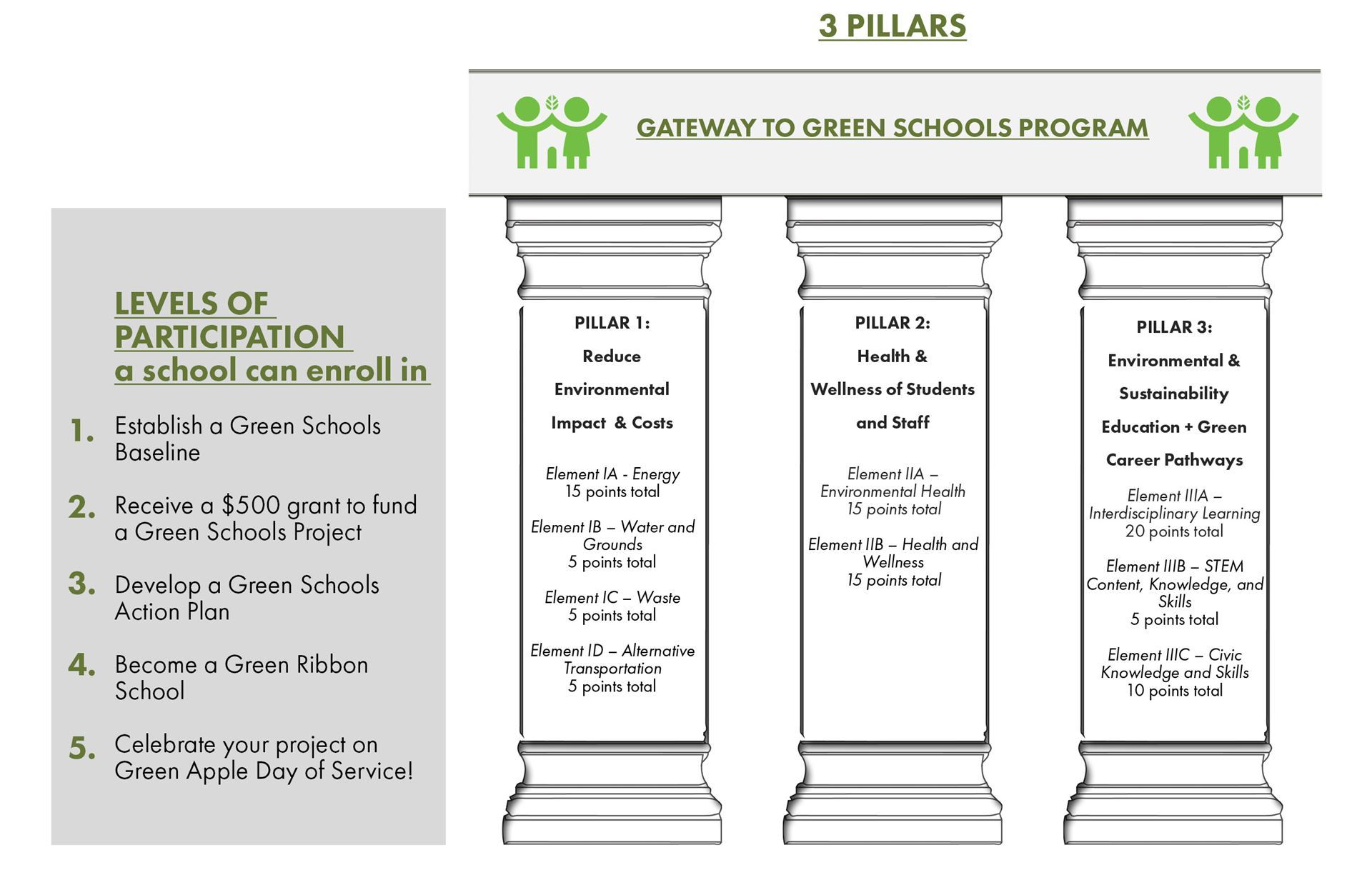
According to Sarah Trauger, the transportation specialist for the school, the Safe Routes to School Program touches on each of the three pillars of the Green Schools Program. A bike safety course and the California Pedestrian and Bicycle Safety Curriculum was implemented for Grades 4 and 5 to Pillar 1: Element ID – Alternative Transportation. Bicycling and walking are the epitome of alternative transportation. Second, biking and walking are clearly related to both of the elements found in Pillar 2. When students learn bike and pedestrian safety at school, and learn to use them as a means to get to school, the reduction in greenhouse gases and decreased use of automobiles on our roads, aides in our environment’s health (Element IIA). Additionally, when students ride bikes and walk to school, their own health and wellness will improve too. Within the Curriculum, students prepare a plan for scheduling 60 minutes of physical activity into their daily lives and explore the health benefits of physical activity.
Less apparent than the others, the use of the and California Pedestrian and Bicycle Safety Curriculum for Grades 4 and 5 within the Safe Routes to School Program, teaches bike and pedestrian safety in a way that draws on other subjects students are learning in school, especially math. Students spend time learning how to calculate and reduce the amount of air pollution emitted each day (Element IIIA – Interdisciplinary Learning and Element IIIB – STEM Content, Knowledge, and Skills). Lastly, using the Curriculum, students learn civic knowledge and skills (Element IIIC), with lessons on: rules of the road, where students learn about pedestrian and bicycle safety laws and consider real-life scenarios where these laws apply; traffic signs, where students identify the meaning and importance of traffic signs; silent safety, signals where students learn how nonverbal communication helps people stay safe while walking and bicycling; and safety factors, where students examine factors that affect pedestrian and bicycle safety and assess the safety of their routes to school.
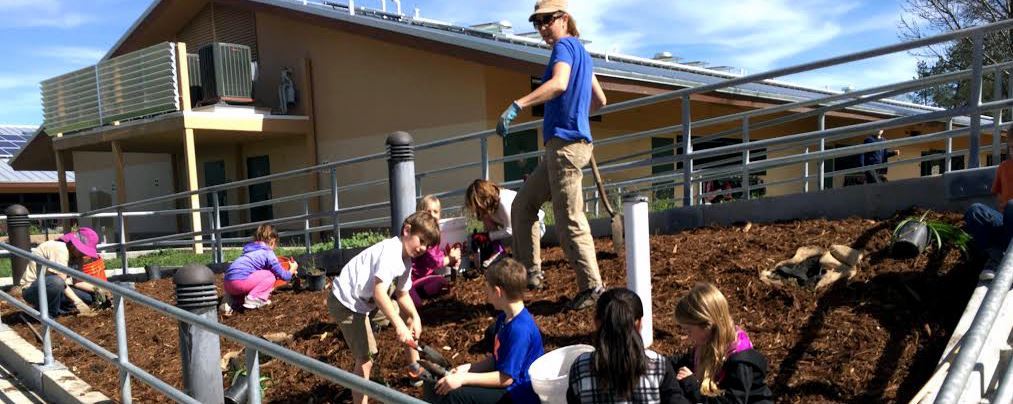
Monterey Road’s garden, outdoor classroom area, food forest, and native plant habitat uses over 19,000 square feet, which is about 5.5 percent of the school grounds. All planters and a grassy slope have been converted to native plant habitat by students. One planter is a devoted butterfly garden used for educational purposes. Lawn areas are used as an extension of classrooms. Students were involved with all steps of the process to design, construct, and now maintain the food forest, which is intended to function like a forest ecosystem with five fruit trees, vegetable plants, California natives, herbs, and berries that provide food and an additional educational space for students. The food forest is used as another outdoor learning space where lessons are taught in connection with the California Next Generation Science Standards (NGSS).
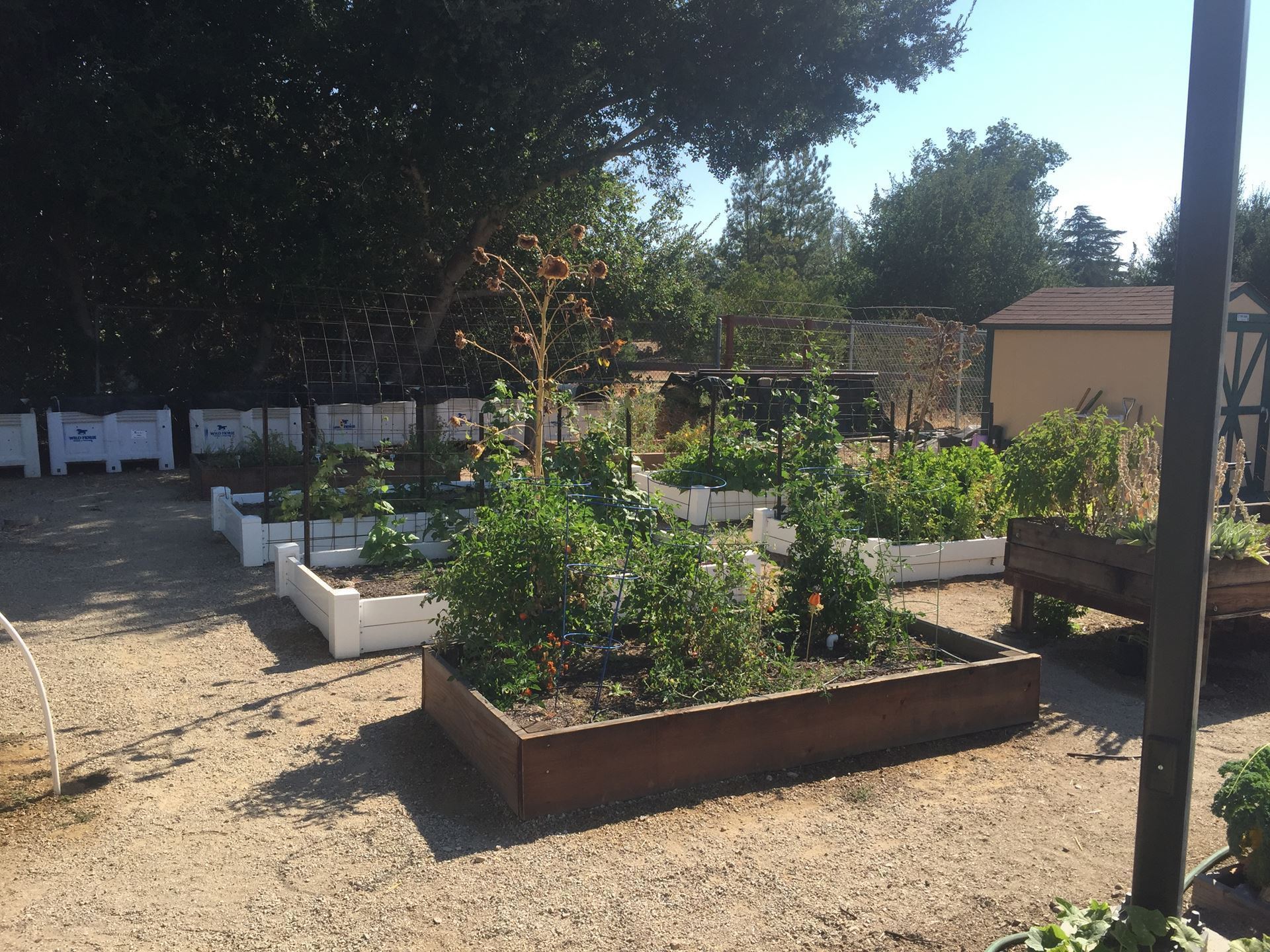
The main garden site at the school includes 23 raised beds, a wheelchair-accessible bed, three student-designed brick beds, and various planters. Produce from the garden is served in the cafeteria, sold on Mondays at a mini-farmers market, and donated to a Wellness Kitchen for use in meals prepared for cancer patients. Students learn general garden maintenance that supports life science lessons through planting seeds, harvesting, collecting seeds, and composting. Students develop problem-solving skills when deterring gopher activity and designing weather protection.
The Caring Schools Community program at Monterey Road is a program that builds classroom and schoolwide community while developing students’ social and emotional skills and competencies. In addition, students have daily access to the school psychologist and biweekly campus visits from Paso Robles Community Centers counselors. Students participate in cooking lessons using food grown in the garden, and the third grade holds salad parties to eat what they harvest. Family cooking nights throughout the year give families the opportunity to cook healthy meals using produce from local farms and campus gardens (U.S. Department of Education Green Ribbon Schools: Highlights from the 2018 Honerees2018).
Below are some additional accomplishments made by the school:

"As a school, we have been committed to sustainability efforts for the last three years. Our students and staff are passionate to Outdoor Learning, Next Generation Science Standards and implementing practices throughout our campus that reduce waste. This award was made possible because of the amazing team we have in place. I am so proud of our school and know that we will continue to improve our efforts in the years to come!"
-JulieAnn Davis, Monterey Road Elementary School Principal
Amanda Shere worked as a partner with Monterey Road where she provided the teachers with hands on science kits from the National Energy Education Development (NEED) Project as well as being the lead author of all 3 of their Green Ribbon applications. Here is what she had to say about the latest achievement.
"The National Green Ribbon School Award that Monterey Road received has been several years in the making and I know it means so much to all involved. I attribute their success to the commitment of the whole school to be more sustainable, especially the students, as well as the support of the District Office. I am proud to be a partner of Monterey Road Elementary and I offer my congratulations to them on receiving the award. "
- Amanda Shere, Sustainability Education Specialist
Across the country, 46 schools, six districts, and six post secondary institutions are being honored for their innovative efforts to reduce environmental impact and utility costs, improve health and wellness, and ensure effective sustainability education.
The honorees were named from a pool of candidates nominated by 25 states and the Department of Defense Department of Education Activity. The selectees include 40 public schools, including two magnet schools and two charter schools, as well as six nonpublic schools. Forty-five percent of the 2018 honorees serve a disadvantaged student body.
The list of all selected schools, districts, colleges, and universities, as well as their nomination packages, can be found here. A report with highlights on the 58 honorees can be found here. More information on the federal recognition award can be found here. Resources for all schools to move toward the three Pillars can be found here.
Footnotes:
ED's award is called "U.S. Department of Education Green Ribbon Schools" and has "District Sustainability Award" and "Postsecondary Sustainability Award" categories, in addition to the original school award. It is abbreviated ED-GRS. "Green Ribbon Schools" without the "U.S. Department of Education" is not ED's award, but instead is a separate program overseen by another organization. A selected school is a "2018 U.S. Department of Education Green Ribbon School." A selected district is a "2018 U.S. Department of Education Green Ribbon School District Sustainability Awardee." A selected postsecondary institution is a “2018 U.S. Department of Education Green Ribbon School Postsecondary Sustainability Awardee. There is no "National," “Award,” or "Program" in the title. There is no apostrophe or hyphen after Education.
Written by: U.S. Department of Education Green Ribbon Schools
Contributions from: Sarah Trauger, JulieAnne Davis, Amanda Shere
Edited by: Kori Nielsen and Brianna Ruland
